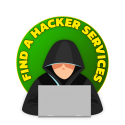A webcam hacking attack is one of the most invasive cybercrimes you can face. In fact, how hackers hack into webcams is shockingly simple, and the consequences can be devastating. When attackers gain access to your camera, they don’t just spy on you they steal privacy, data, and sometimes even your identity. In 2025, with more people working remotely, streaming, and video calling, the risk is higher than ever. This guide explains how hackers exploit webcams and, more importantly, how to protect your feed.
Cybercriminals use several techniques to hijack your camera. Here are the most common:
- Phishing & Malware: Clicking a fake link or downloading a corrupted file can install malware that grants access to your webcam.
- Remote Access Trojans (RATs): These stealth programs let hackers control your entire device, including the camera and microphone.
- Weak Passwords: Many external webcams and IoT cameras ship with default logins like “admin/admin,” which hackers exploit through brute-force attacks.
- Outdated Software: Unpatched operating systems and apps leave open doors for attackers.
- Compromised Wi-Fi Networks: Public or unsecured Wi-Fi gives hackers a direct line into your connected devices.
👉 According to the Electronic Frontier Foundation, weak device security remains one of the leading causes of surveillance abuse.
Signs Your Webcam Has Been Hacked
- Webcam light turns on unexpectedly.
- Battery drains faster than usual (on laptops).
- Unknown processes running in Task Manager.
- Files or folders you didn’t create.
- Complaints from contacts about receiving strange messages.
If you notice any of these, assume your webcam feed is already compromised.
How to Protect Your Webcam Feed
Securing your webcam isn’t complicated, but you must be proactive. Here’s what works:
- Use Strong, Unique Passwords: Never keep the default credentials. Tools like password managers make it easier.
- Enable Two-Factor Authentication: Many modern devices and apps now offer this extra layer.
- Update Regularly: Install security patches for your OS, webcam software, and video apps.
- Cover Your Camera: A physical shutter or webcam cover is the cheapest, most effective safeguard.
- Run Security Software: Reliable antivirus or anti-malware tools help block RATs.
- Secure Your Network: Use WPA3 Wi-Fi encryption and avoid public networks for sensitive calls.
👉 Want to learn more? See our Cybersecurity tips for parents, which also apply to family device safety.
Best Tools for Webcam Security
While manual protection goes a long way, dedicated software strengthens your defenses:
- Malwarebytes: Excellent at detecting RATs.
- Norton 360: Includes webcam protection alerts.
- Bitdefender: Offers layered privacy protection.
📌 See Consumer Report for more comparisons.
Legal and Ethical Considerations
Webcam surveillance without consent is illegal in most countries. Installing software to secretly watch someone else can result in fines. Even if it is a spouse or employee on their personal device, the consequences include jail time.
Employers monitor only company-owned devices and must inform staff. Parents use webcam monitoring on devices owned by or registered to children under 18. Anything beyond that crosses into criminal territory.
FAQ: Webcam Hacking in 2025
Q: Can hackers access my webcam if it’s off?
A: If malware is installed, yes. The camera can be activated remotely even if you think it’s disabled.
Q: Do built-in laptop covers work?
A: Yes physical covers are the most reliable way to block unauthorized access.
Q: Is it only Windows PCs at risk?
A: No. macOS, Linux, and even smart TVs with cameras are vulnerable if not secured.
Final Thoughts
Hackers exploit webcams because the payoff is huge: private images, conversations, and data. But you don’t have to make it easy for them. By understanding how hackers hack into webcams and applying straightforward protections, you can safeguard your feed and your privacy.
Bottom line: keep your software updated, secure your accounts, and cover that lens when not in use. In a world where cybercriminals are always watching, your webcam security is non-negotiable.

